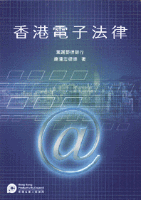Types of Product Liability
Products liability is generally based on one of 3 theories:
Hong Kong does NOT have a strict liability against a manufacturer etc, although that has once been proposed to have by the Law Reform Commission. Most states in the United States impose strict liability on the manufacturer or seller of a product that is defective in a way that makes the product unreasonably dangerous. Strict liability means that the manufacturer or seller is liable for injuries caused by an unreasonably dangerous defective product, even if he or she used all possible care in the preparation and sale of the product.
In Hong Kong that do not impose strict liability for defective products, an injured person can recover for injuries caused by a defective product if they can show that the manufacturer was negligent, or breached a warranty. Negligence means that the manufacturer or seller did not act with reasonable care to ensure the safety of the product. The difference between strict liability and negligence is that, under a negligence standard, a person will not be liable for a defect if he or she took all reasonable care to avoid or detect the defect, while under strict liability, if there was an unreasonably dangerous defect in the product, no amount of care will constitute a defence.
An injured party can recover on a theory of negligence if the evidence will support it. Which theory is relied on is important in the calculation of damages: damages an include compensatory damages. Breach of warranty is between the injured party and the sales shop.
